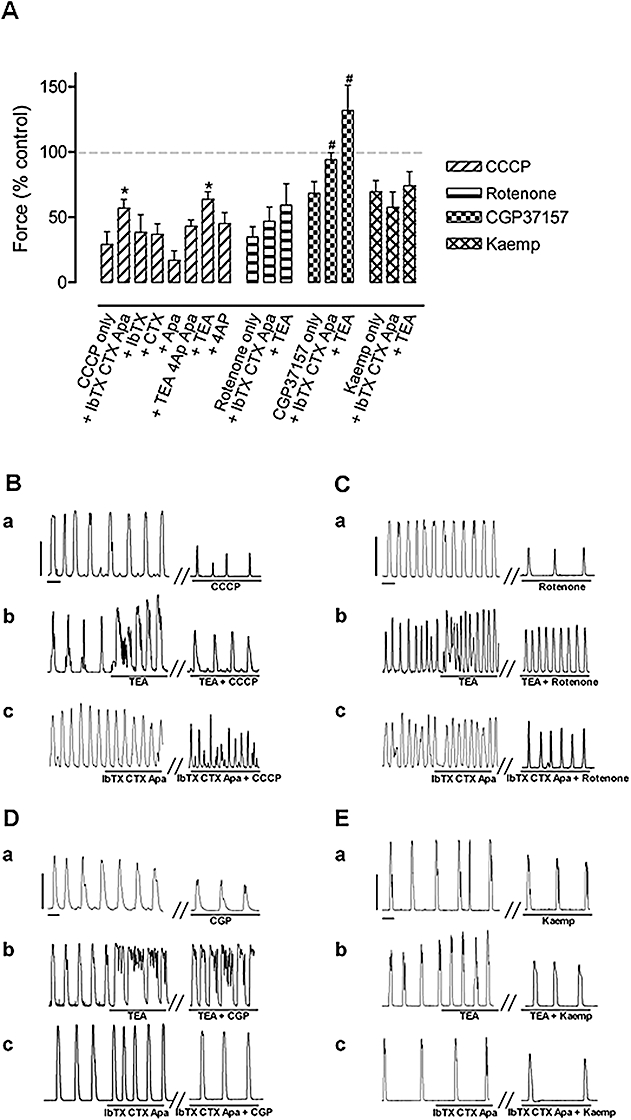Figure 8.

The effect of K+ channel blockers on CCCP, rotenone, CGP37157 and kaempferol-induced inhibition of contractions. (A) The effects of mitochondrial agents alone and in the presence various K+ channel blockers on the force of spontaneous uterine contractions. The effects of CCCP and CGP37157 on contractile force were significantly counteracted by the combined application of IbTX, CTX and apamin (Apa) or TEA, whereas the effects of rotenone and kaempferol (Kaemp) were not. Concentrations used: CCCP, 2 µM; IbTX, 50 nM; CTX, 100 nM; apamin, 100 nM; TEA, 15 mM; 4-AP, 1 mM; rotenone, 1 µM; CGP37157, 10 µM; kaempferol, 10 µM. Columns are the mean ± SEM. (B–E) Representative traces showing the effect of CCCP (B), rotenone (C), CGP37157 (D) and kaempferol (E) alone (a), together with 15 mM TEA (b) or 50 nM IbTX, 100 nM CTX and 100 nM apamin (c). The vertical and horizontal scale bars (B–E) correspond to 10 mN and 1 min, respectively, and apply to all panels. Student's two-tailed unpaired t-test was applied with *significant difference (P < 0.05) from the response to CCCP; n = 4–7 and #significant difference (P < 0.05) from the response to CGP37157. 4-AP, 4-aminopyridine; CCCP, carbonylcyanide-3-chlorophenylhydrazone; CGP37157, 7-chloro-5-(2-chlorophenyl)-1,5-dihydro-4,1-benzothiazepin-2(3H)-one; CTX, charybdotoxin; IbTX, iberiotoxin; TEA, tetraethylammonium.
